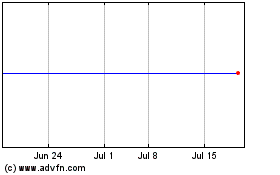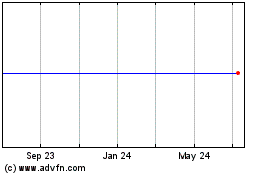Apple's New Antenna Aims To Address Dropped-Call Issue
June 14 2010 - 3:27PM
Dow Jones News
Apple Inc.'s (AAPL) new iPhone might perform a simple task much
better than its predecessors: Hold a phone call.
Last week, Apple unveiled the latest iteration of its popular
smartphone, dubbed the iPhone 4. Among the most dramatic design
changes is a stainless-steel antenna that wraps around its
sides.
The new antenna design constitutes a radical departure from
previous iPhone models, which buried the antenna under the phone's
shell. The new phone puts out more radio-frequency radiation than
its predecessor, according to Federal Communications Commission
documents. That is expected to give it greater signal strength and
reliability.
Apple hopes the new design will counter one of the most common
complaints consumers have with the iPhone: dropped calls. If it
effectively deals with the problem, which has dogged the device
since it first went on sale in June 2007, the iPhone's new antenna
could spur further adoption of a product that has turned into
Apple's biggest growth driver.
Since the iPhone's debut, Apple shares have more than doubled.
In late morning trading Monday, Apple shares rose $1.94 to
$255.45.
Apple didn't respond to requests for comment.
The elevated radio-frequency radiation meets FCC safety
guidelines. Radiation emission from the device is roughly in line
with similar smartphones from Palm Inc. (PALM) and Research In
Motion Ltd. (RIMM), according to FCC test results.
Though popular with consumers, Apple's iPhone has been beset
with complaints about dropped calls. The problem is so persistent
that Comedy Central's Stephen Colbert, an avowed Apple fan, joked
recently that the company's new iPad tablet computer was just like
an iPhone because "you can't make calls with it."
At a conference before the announcement of the iPhone 4, Apple
Chief Executive Steve Jobs suggested AT&T Inc. (T), the
iPhone's exclusive carrier in the U.S., was to blame for the poor
connections. He said the carrier was working to upgrade its network
to address the problem.
An AT&T spokesman declined to comment on the iPhone 4's
design but said the company continues to invest in its network.
Of course, there is no guarantee that the new design will
address the problem. "This is a very difficult thing to do," said
Robert Thorpe, an antenna-and-radio-frequency consultant, adding
few companies have used such an unorthodox design.
And if AT&T's network remains congested, the new antenna may
have minimal impact. Too many customers jockeying for airwaves will
inevitably result in some users getting bounced.
Still, Apple's antenna boasts impressive characteristics.
It is among the largest available on a cellphone, wireless
professionals say, and uses separate parts of the steel band to
carry different radio signals. Those include Wi-Fi, GPS and
cellular.
Combined with the bigger antenna, the increased energy will
likely give the device better signal strength, which should let it
hang on to calls better.
"A large antenna has a massive impact on how the device
interfaces with the network," said Nielsen telecommunications
researcher Roger Entner. Entner, who has been critical of the
iPhone's radio technology in the past, said the new design will be
a "massive improvement."
-By Ian Sherr, Dow Jones Newswires; 415-439-6455;
ian.sherr@dowjones.com
Palm (MM) (NASDAQ:PALM)
Historical Stock Chart
From Mar 2024 to Apr 2024

Palm (MM) (NASDAQ:PALM)
Historical Stock Chart
From Apr 2023 to Apr 2024
